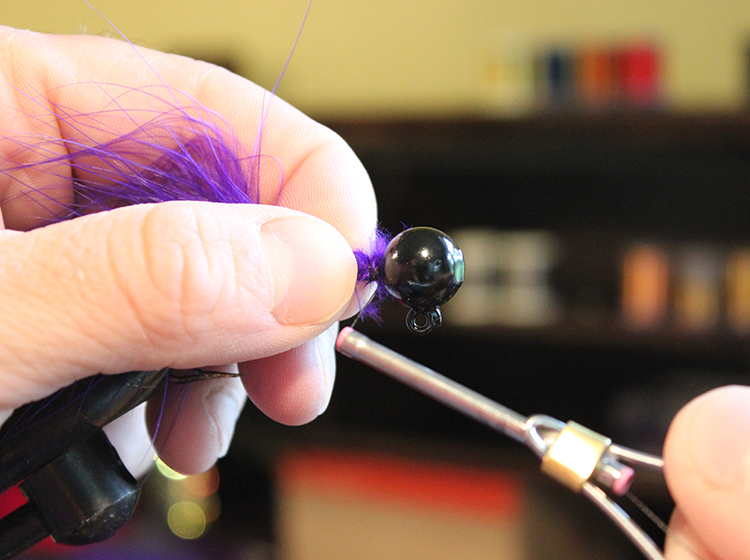Twitching jigs for salmon was once unheard of, now it has become one of the most mainstream techniques on the rivers of the Pacific Northwest. If you have tried this technique and want to give tying your own jigs a shot, this post is for you. While most of the guys that tie their own jigs really enjoy getting creative, if you are new to tying, you will want to start with the salmon jig in its most simple form.
What you will need to tie salmon jigs…
- Fly tying vise
- Thread bobbin
- Scissors
- Head cement (optional)
- 1/4 to 1/2 ounce jig head
- 3/0 Thread
- Marabou in your preferred colors
- Flashabou
How to start tying a salmon jig
Lay out all of your materials and tools. Tightly wrap the thread around the shank of the hook. You will want to wrap the thread over itself so that it anchors it to the hook.

Tying in the marabou
Remove several quills of marabou and trim off the stem so that the marabou is at your preferred jig length. I like to wrap between 4 to 6 quills per jig. In this case I am tying in 3 quills of purple marabou, to be followed with an additional 3 quills of pink marabou. This purple and pink combo is a salmon slayer!

Wrapping in the second color
I’ve tightly wrapped my purple and made sure that it is secure. Now I add my three pink marabou quills. I make sure that every wrap is tight and that the marabou cannot be pulled out. There is nothing worse than having a beautiful jig fall apart on you before you can even catch a fish with it!

Finishing knot
After securing in all of my marabou, I take the thread and make a couple overhand knots around the shank to finish off the jig. Once you have 3 to 4 overhand knots, cut off the excess thread so there is no tag end.

Head cement and let dry
I apply a drop of fly tying head cement as the final step of the tying process. Be sure to allow for several days of cure time before fishing. If I am tying jigs that I plan on fishing immediately, I will avoid the head cement and simply use a couple extra overhand knots to finish the jig. While the jig bite is very reactionary and visual, I have more confidence if my jig doesn’t smell like glue.

The finished product
Here is a beautiful and simple salmon twitching jig ready for the river.











 Fishing at Larsen Lake – Bellevue, Washington
Fishing at Larsen Lake – Bellevue, Washington
